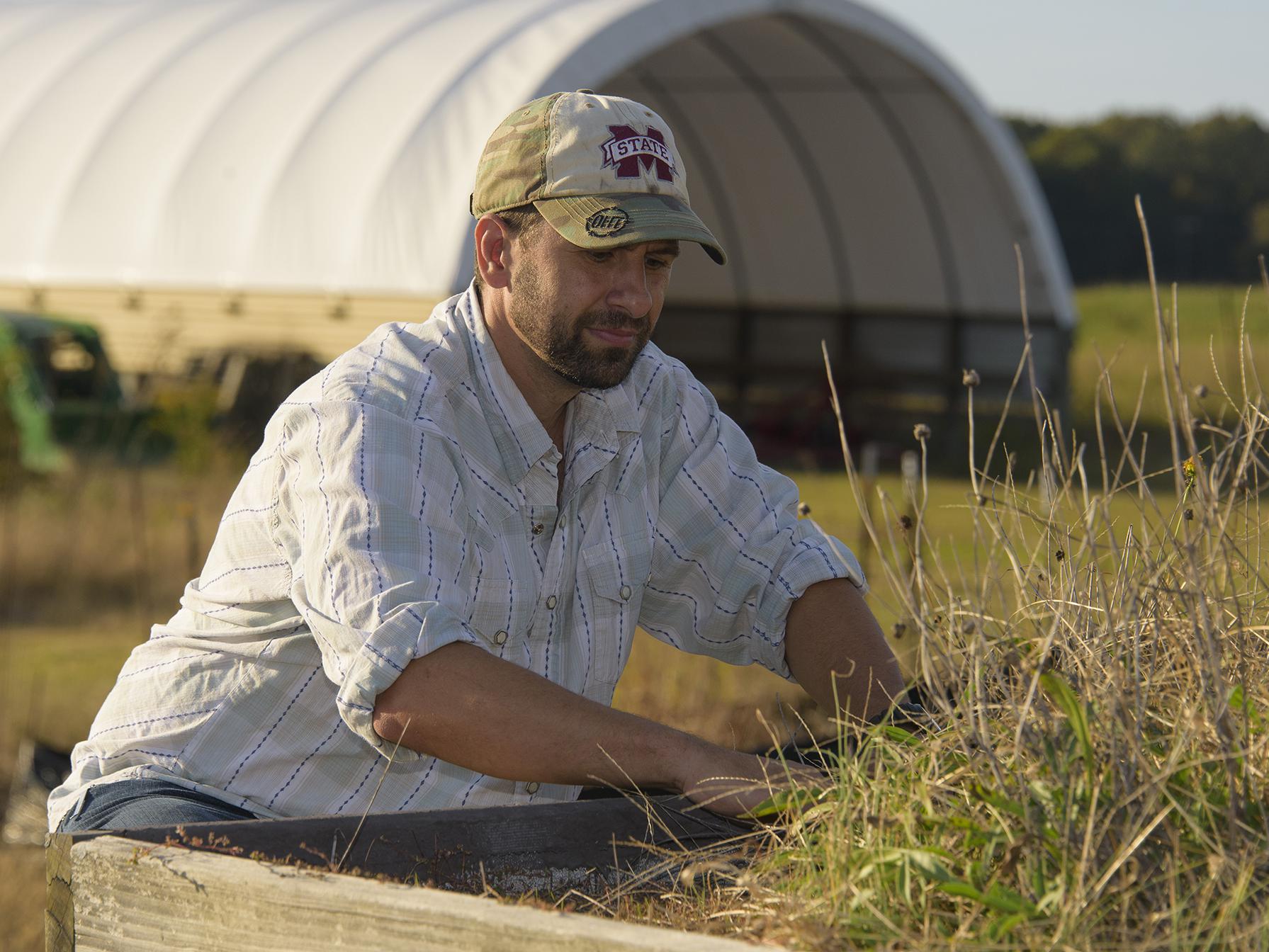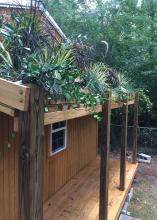Information Possibly Outdated
The information presented on this page was originally released on November 5, 2018. It may not be outdated, but please search our site for more current information. If you plan to quote or reference this information in a publication, please check with the Extension specialist or author before proceeding.
Green roofs provide space for biodiversity
STARKVILLE, Miss. -- The notion of a rooftop garden may inspire images of ancient architecture, big city green spaces or homestead cabins in the American West, but the idea is feasible for modern construction.
Bob Brzuszek, Mississippi State University Extension Service professor of landscape architecture, said building green roofs is an innovative way to include green spaces in urban areas and increase biodiversity.
“There are several dozen green roofs across the state of Mississippi; I even have one in my backyard,” he said. “A few years ago, I was building a roof over my porch and designed it for plants. It has worked extremely well with very little care.”
Tim Schauwecker, a Mississippi Agricultural and Forestry Experiment Station associate professor in the Mississippi State University Department of Landscape Architecture, said rooftop gardens can be of several different types.
“Green roofs can be a managed rooftop garden space with varying depths of soil that can support shrubs and even trees, or it can be a thin layer of soil that supports prairie grasses,” Schauwecker said.
Green roofs are designed to drain well, which limits the amount of water -- and therefore the weight -- on a roof. A waterproof layer is installed first, and then an extensive drainage system covers the entire roof. A filter cloth rests on top of the drainage layer, and soil is added on top. Grasses and other vegetation are planted to meet the goals of the green roof.
Researchers have used several raised planters on the Henry H. Leveck Animal Research Center at MSU. One looked at the total amount of water being held in each of four different rooftop types. Schauwecker said roofs with steeper slopes hold less water, so more soil is needed to increase moisture retention.
“From a design standpoint, a roof with a 30 percent slope and 6 inches of soil is equivalent to a flat green roof with 4 inches of soil,” Schauwecker said. “That 30 percent slope gives you the ability to see the roof.”
He said plants grow equally well under both conditions, but the sloped roof offers more design opportunities.
Another project tracked the plant community over time and looked at the biodiversity provided in a roof planted in prairie grass as compared to sedum, flowering plants often used in green roofs.
“With greater biodiversity comes greater habitat for insects and those creatures that feed on insects,” Schauwecker said. “The overall food web is more complicated and diverse as a result.”
While inviting insects to live on the roof may seem undesirable to some, JoVonn Hill, an associate research professor in the MSU College of Agriculture and Life Sciences, said they are the same as insects found in lawns and gardens.
“Butterflies are common visitors to flowering plants, and you will see some stinging insects, such as ants, bees and wasps,” Hill said. “But increasing habitat for pollinators, such as bees and wasps, is typically one of the goals of green roofs, considering the worrisome decline in species that act as pollinators.”
While it is possible that some burrowing insects could potentially damage the waterproofing membrane used in some types of green roofs, careful construction and routine inspections for leaks and cracks around eaves and edges can prevent problems.
“If you want to avoid pesticides, ensuring a good physical barrier is the best way to keep insects outdoors,” Hill said.
Schauwecker said retrofitting an existing building to accommodate a green roof can be difficult, but new construction can easily be designed to accommodate the structural challenges presented by the added weight of soil and water.
“Other things that must be designed include the management of the plant community and whether it is intended to be viewed from above,” he said. “For example, prairie grasses look great when there is plenty of rain in the spring and fall, but some people would not find them attractive when they are dry and brown.”
While they are not found everywhere, green roofs are gaining popularity in areas that have regulations that incentivize storm water management.
“Many new developments are responsible for the storm water runoff they create, and green roofs can be part of the process of minimizing the runoff,” Schauwecker said.
Rooftop gardens are also an asset in situations where upper stories look down on a roof. These areas can be made beautiful assets rather than gray infrastructure.
For more information on green roofs, visit the Mississippi State Extension Smart Landscapes page at https://bit.ly/2CZinQZ or its Facebook page at https://www.facebook.com/smartlandscapesmsu.











